| View previous topic :: View next topic |
| Author |
Message |
stevemark

Joined: 29 Apr 2011
Posts: 4080
Location: Switzerland
|
 Posted: Fri Jan 29, 2021 5:50 pm Post subject: Vintage lenses: APS-C troublesome, FF not Posted: Fri Jan 29, 2021 5:50 pm Post subject: Vintage lenses: APS-C troublesome, FF not |
 |
|
stevemark wrote:
In another thread I have stated
| Quote: |
| A warning in advance - those high res APS-C sensors are not ideal for vintage lenses. The 26.1 MP (APS-C) of your Fuji correspond to nearly 60 MP on Full Frame. That's simply too much for most vintage MF lenses. Get a simple, used FF camera with 24 MP, ideally with stabilizer (e. g. the Sony A7II). That's where the vintage lenses shine. |
Some users didn't believe me, so of course I have to prove my point.
My experience "APS-C vs FF" dates back to pre-production Sony A77 camera (first 24 MP APC-S sensor, 2011) which i was using side-by-side with my Sony A900 (24 MP FF, 2008). Even the best lenses available then, e. g. the Minolta AF 2.8/200mm APO, were struggling on the 24MP APS-C Sensor: I had to stop the lens down to f4.5 to get really nice results, and above f8 diffraction was kicking quite visibly. That meant on 24MP APS-C the usable range for the 2.8/200 APO was f4.5 to f8 instead of f2.8 to f11 on the Sony A900 (24MP FF).
Here are a few images from a good vintage lens - the Nikkor "K Series" 1.8/85mm. All images shown below are 100% crops from the center of the 24 MP FF Sony A7II and from the center of the 24 MP APS-C Sony A6000. All crops are straight out of cam; the settings were the same for both cameras. Aperture and time were set manually. As usual a good tripod (Manfrotto MT 057C3) with Mafrotto 410 head was used. Both cameras were used with electronic firts shutter and self-timer, to avoid blurring.
Sorry for the boring subject - weather is lousy right now, and i just managed to do these shots before it was getting really dark.
Now lets see the results.
ATTENTION - click on the images to see the original image! For whatever reason, the images implemented into the thread show nearly no color fringing on my screen, as if they were corrected by the browser (?!?).
When I click on the images, however, they appear as uploaded, and especially the APS-C images show distinct purple color cast
First the Nikkor 1.8/85mm on 24 MP FF at f4 - probably its optimal aperture for center reolution:
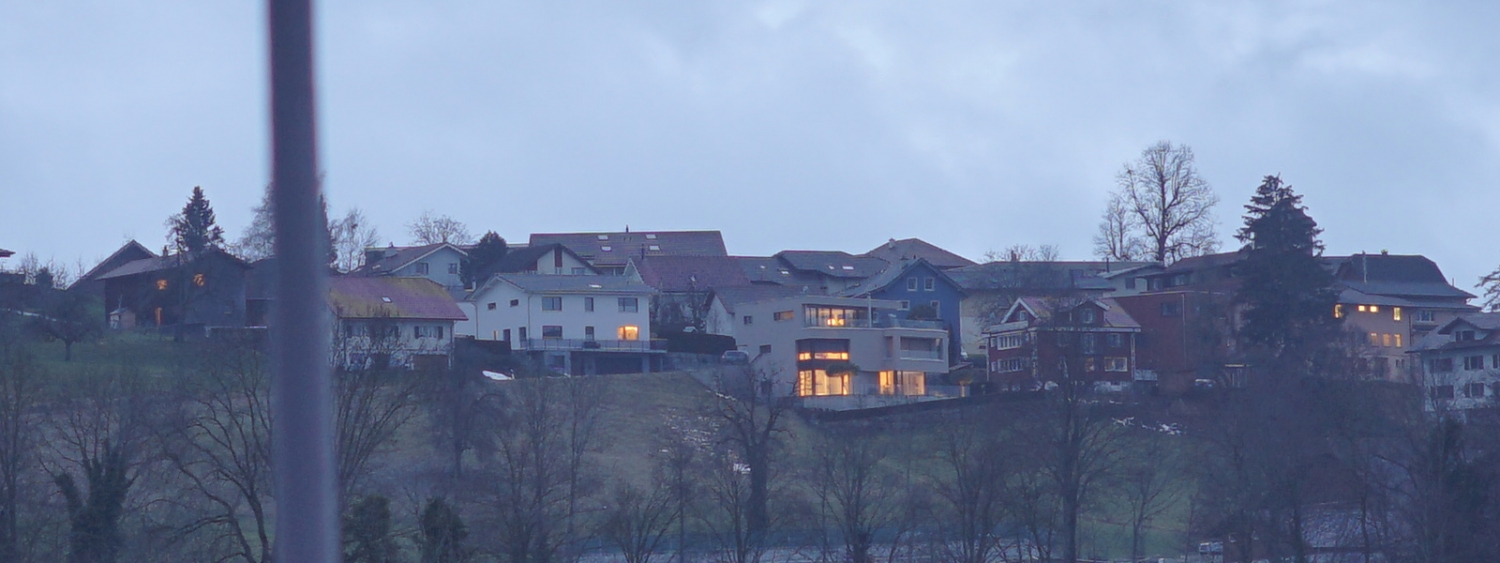
Good resolution, everything looks perfectly sharp with good contrast. There's no color fringing - neither on the buildings nor on the horizon. Perfecly usable.
Now the Nikkor 1.8/85mm on 24 MP FF at f1.8 (wide open):
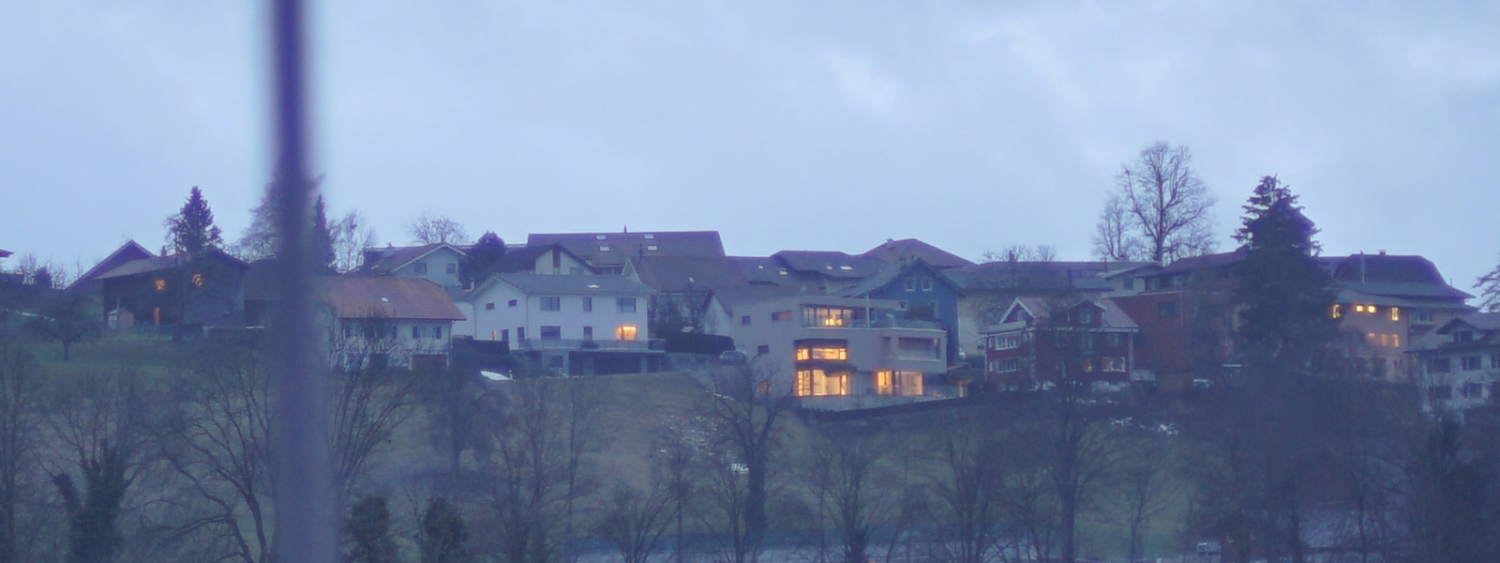
Resolution still is surprisingly good, but the contrast is quite a bit lower. We have traces of color fringing on the horizon as well as on the trees, but not on the buildings. Not perfect, but well usable, especially after some minor corrections in post-processing.
Now the same lens at f4 (its sweet spot!) on 24 MP APS-C:

Quite sharp as well (comparable to the above FF image at f1. , and more color fringing (at f4!!) than on FF at f1.8. There's faint purple haze mainly over the dark parts of the image. Difficult to correct in PP. , and more color fringing (at f4!!) than on FF at f1.8. There's faint purple haze mainly over the dark parts of the image. Difficult to correct in PP.
And now the eye-opener - The Nikkor wide open on 24 MP APS-C:
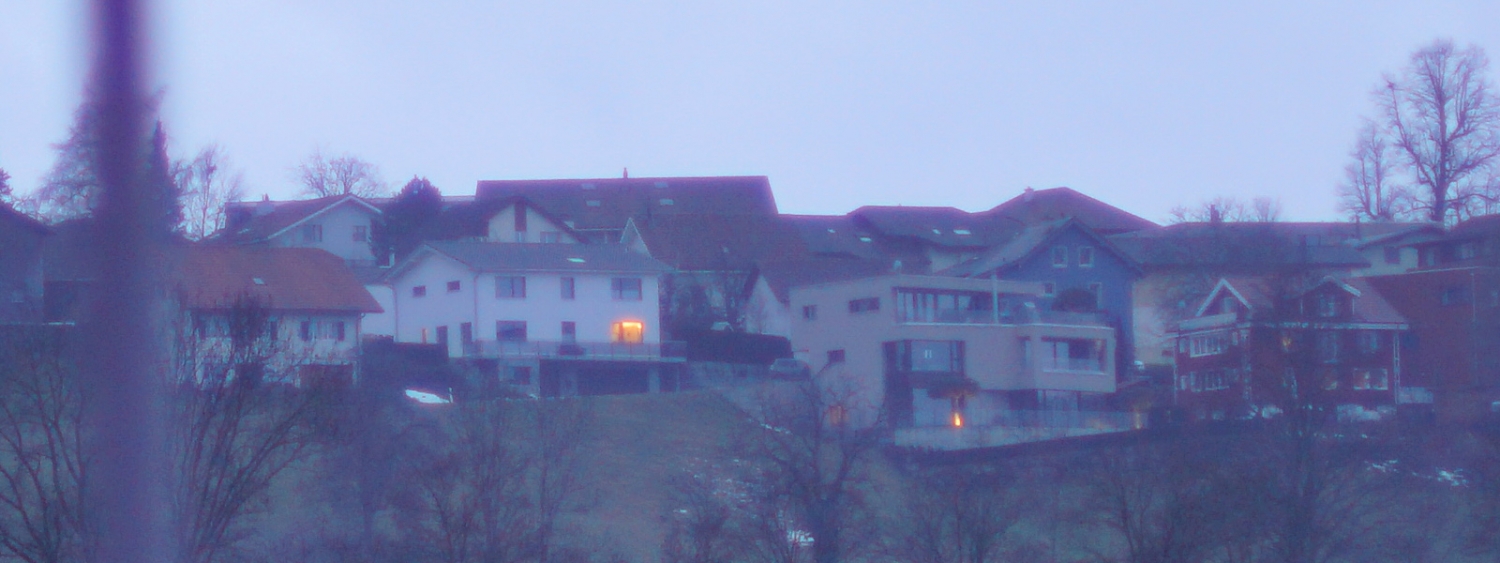
The entire image is covered with a quite disturbing purple color cast. Contrast is low, and resolution just is OK in high-contrast areas (such as the tree on the right). Even if we re-size this image to match the 24 MP FF image (to 66.6%), it's far inferior to the FF image.
I have similar patterns with nearly all vintage MF lenses; thus I can state with a fair amount of certainty that most vintage lenses have distinct problems on 24MP APS-C sensors.
Sure there are high performance Ciné lenses or lenses such as the Leica R 2.8/180mm APO and 4/280mm APO which have no problems at all high res APS-C. But they are both rare and - well - quite expensive. Much more expensive than a FF solution, in fact!
And a last remark: I'm talking here about vintage lenses (before 1985). Modern lenses often cope very well with high res APS-C sensors.
S
_________________
www.artaphot.ch
Last edited by stevemark on Fri Jan 29, 2021 7:49 pm; edited 3 times in total |
|
| Back to top |
|
 |
vivaldibow

Joined: 23 Jun 2018
Posts: 841
Expire: 2021-03-09
|
 Posted: Fri Jan 29, 2021 7:00 pm Post subject: Posted: Fri Jan 29, 2021 7:00 pm Post subject: |
 |
|
vivaldibow wrote:
Interesting. Thanks for the comparison, Steven. I wonder if the difference could also be sensor related. As early as in 2008, my friend bought a Nikon D90.
I loaned him my Vivitar series 1 90mm f/2.5 and he showed me a hazy image with lots of purple fringing/cast, very similar to your photo. I was very surprised.
I can do a similar test on my A3000's 20M sensors versus A7ii's 24M. |
|
| Back to top |
|
 |
stevemark

Joined: 29 Apr 2011
Posts: 4080
Location: Switzerland
|
 Posted: Fri Jan 29, 2021 7:41 pm Post subject: Posted: Fri Jan 29, 2021 7:41 pm Post subject: |
 |
|
stevemark wrote:
| vivaldibow wrote: |
| Interesting. Thanks for the comparison, Steven. I wonder if the difference could also be sensor related. As early as in 2008, my friend bought a Nikon D90. I loaned him my Vivitar series 1 90mm f/2.5 and he showed me a hazy image with lots of purple fringing/cast, very similar to your photo. I was very surprised. |
Interesting information, thanks for sharing it!
I never had such problems with the 12 MP Sony A700 (APS-C as well), but I certainly was - and still am - puzzled about the extent of purple fringing / color cast on 24 MP APS-C sensors when using vintage lenses.
Even back in 2011, when I was testing a preproduction Sony A77, the newly developped Sony 2.8/16-50mm DT SSM didn't have such problems on the A77. So my assumption was it was lens-related, but I may be wrong.
| vivaldibow wrote: |
| I can do a similar test on my A3000's 20M sensors versus A7ii's 24M. |
Yeah, would be interesting to see ...
S
_________________
www.artaphot.ch |
|
| Back to top |
|
 |
kymarto


Joined: 30 Nov 2016
Posts: 409
Location: Portland, OR and Milan, Italy
|
 Posted: Fri Jan 29, 2021 9:03 pm Post subject: Posted: Fri Jan 29, 2021 9:03 pm Post subject: |
 |
|
kymarto wrote:
I'm now using a 62mp FF camera,, which has about the same pixel density as a 24mp APSC camera and am not noticing any issues such as you describe. Perhaps this has to do with the sensor on your APSC camera and not the pixel density. It's quite a stretch to blame the difference on pixel density testing only a single example of each type of sensor.
_________________
Vintage lens aficionado |
|
| Back to top |
|
 |
Alex TG

Joined: 13 Oct 2019
Posts: 221
Location: Ukraine
|
 Posted: Fri Jan 29, 2021 9:31 pm Post subject: Re: Vintage lenses: APS-C troublesome, FF not Posted: Fri Jan 29, 2021 9:31 pm Post subject: Re: Vintage lenses: APS-C troublesome, FF not |
 |
|
Alex TG wrote:
| stevemark wrote: |
Now the same lens at f4 (its sweet spot!) on 24 MP APS-C:
|
And why EXIFs show that all four pictures were shot with Sony A7II, may I ask?  |
|
| Back to top |
|
 |
vivaldibow

Joined: 23 Jun 2018
Posts: 841
Expire: 2021-03-09
|
 Posted: Fri Jan 29, 2021 9:52 pm Post subject: Posted: Fri Jan 29, 2021 9:52 pm Post subject: |
 |
|
vivaldibow wrote:
Regarding Sony A3000's 20M sensor, I now recalled I tried the following lenses:
Minolta MC 50mm f/1.4
Vivitar S1, 35-85 f/2.8
Vivitar RL 24mm f/2.0
All hazy wide open (quite hazy). At that time, I talked to one of my online friends and he said "large aperture" vintage lenses are like that wide open. So I took his words. But I've never tried those lenses on A7ii. Maybe it is time to do so.
Another piece of information is that I tried Polaris 135mm f/1.8 on Sony A77ii and it doesn't have any issue like that. This is in line with what you've tested on A77. |
|
| Back to top |
|
 |
kymarto


Joined: 30 Nov 2016
Posts: 409
Location: Portland, OR and Milan, Italy
|
 Posted: Sat Jan 30, 2021 12:10 am Post subject: Re: Vintage lenses: APS-C troublesome, FF not Posted: Sat Jan 30, 2021 12:10 am Post subject: Re: Vintage lenses: APS-C troublesome, FF not |
 |
|
kymarto wrote:
| stevemark wrote: |
In another thread I have stated
| Quote: |
| A warning in advance - those high res APS-C sensors are not ideal for vintage lenses. The 26.1 MP (APS-C) of your Fuji correspond to nearly 60 MP on Full Frame. That's simply too much for most vintage MF lenses. Get a simple, used FF camera with 24 MP, ideally with stabilizer (e. g. the Sony A7II). That's where the vintage lenses shine. |
Some users didn't believe me, so of course I have to prove my point.
My experience "APS-C vs FF" dates back to pre-production Sony A77 camera (first 24 MP APC-S sensor, 2011) which i was using side-by-side with my Sony A900 (24 MP FF, 2008). Even the best lenses available then, e. g. the Minolta AF 2.8/200mm APO, were struggling on the 24MP APS-C Sensor: I had to stop the lens down to f4.5 to get really nice results, and above f8 diffraction was kicking quite visibly. That meant on 24MP APS-C the usable range for the 2.8/200 APO was f4.5 to f8 instead of f2.8 to f11 on the Sony A900 (24MP FF).
Here are a few images from a good vintage lens - the Nikkor "K Series" 1.8/85mm. All images shown below are 100% crops from the center of the 24 MP FF Sony A7II and from the center of the 24 MP APS-C Sony A6000. All crops are straight out of cam; the settings were the same for both cameras. Aperture and time were set manually. As usual a good tripod (Manfrotto MT 057C3) with Mafrotto 410 head was used. Both cameras were used with electronic firts shutter and self-timer, to avoid blurring.
Sorry for the boring subject - weather is lousy right now, and i just managed to do these shots before it was getting really dark.
Now lets see the results.
ATTENTION - click on the images to see the original image! For whatever reason, the images implemented into the thread show nearly no color fringing on my screen, as if they were corrected by the browser (?!?).
When I click on the images, however, they appear as uploaded, and especially the APS-C images show distinct purple color cast
First the Nikkor 1.8/85mm on 24 MP FF at f4 - probably its optimal aperture for center reolution:

Good resolution, everything looks perfectly sharp with good contrast. There's no color fringing - neither on the buildings nor on the horizon. Perfecly usable.
Now the Nikkor 1.8/85mm on 24 MP FF at f1.8 (wide open):

Resolution still is surprisingly good, but the contrast is quite a bit lower. We have traces of color fringing on the horizon as well as on the trees, but not on the buildings. Not perfect, but well usable, especially after some minor corrections in post-processing.
Now the same lens at f4 (its sweet spot!) on 24 MP APS-C:

Quite sharp as well (comparable to the above FF image at f1. , and more color fringing (at f4!!) than on FF at f1.8. There's faint purple haze mainly over the dark parts of the image. Difficult to correct in PP. , and more color fringing (at f4!!) than on FF at f1.8. There's faint purple haze mainly over the dark parts of the image. Difficult to correct in PP.
And now the eye-opener - The Nikkor wide open on 24 MP APS-C:

The entire image is covered with a quite disturbing purple color cast. Contrast is low, and resolution just is OK in high-contrast areas (such as the tree on the right). Even if we re-size this image to match the 24 MP FF image (to 66.6%), it's far inferior to the FF image.
I have similar patterns with nearly all vintage MF lenses; thus I can state with a fair amount of certainty that most vintage lenses have distinct problems on 24MP APS-C sensors.
Sure there are high performance Ciné lenses or lenses such as the Leica R 2.8/180mm APO and 4/280mm APO which have no problems at all high res APS-C. But they are both rare and - well - quite expensive. Much more expensive than a FF solution, in fact!
And a last remark: I'm talking here about vintage lenses (before 1985). Modern lenses often cope very well with high res APS-C sensors.
S |
Here is a full image and a ~100% crop of an image shot in APSC mode (26mp) on my Sony A7R4. Lens is a Kodak Ektar 47mm f2 lens from an old folding Retina camera from the 1950s. Shot wide open at f2. Contrast is not terribly high, but the lens is sharp and shows no fringing
#1
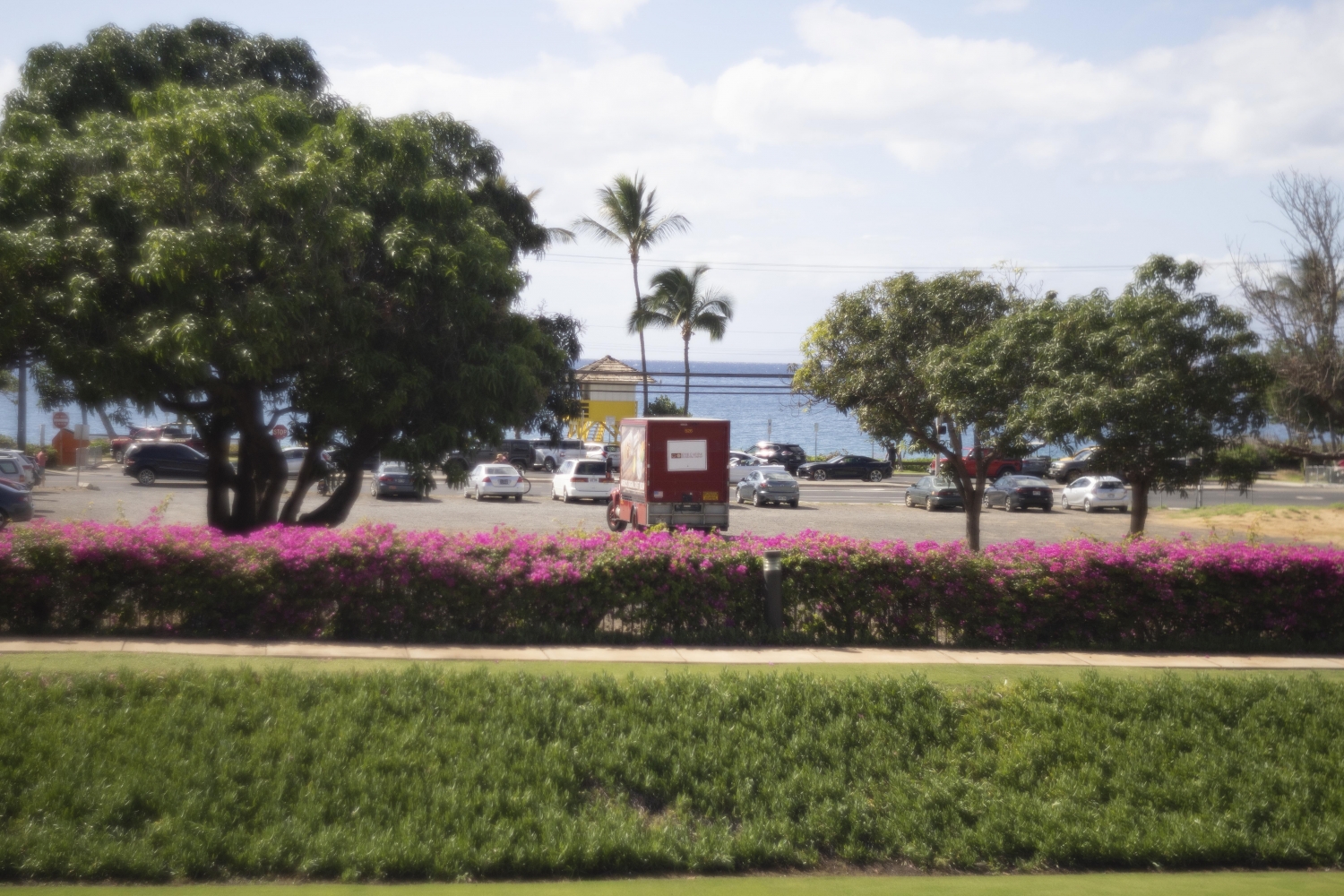
#2

_________________
Vintage lens aficionado
Last edited by kymarto on Sat Jan 30, 2021 11:45 am; edited 1 time in total |
|
| Back to top |
|
 |
visualopsins


Joined: 05 Mar 2009
Posts: 11059
Location: California
Expire: 2025-04-11
|
 Posted: Sat Jan 30, 2021 12:36 am Post subject: Posted: Sat Jan 30, 2021 12:36 am Post subject: |
 |
|
visualopsins wrote:
Of course the same sensor gives the same result. 
Got a theory some sensors designed for modern short back focus lenses have trouble with vintage lenses' less steep angle of projection onto the sensor surface.
The problem is limited to some early APS-C mirrorless cameras.
The "problem" (actually a feature) seems fixed on later camera designs.
The theory does not explain problems with vintage lenses on APS-C DSLR, problems which may not exist if the theory is correct.
_________________
☮☮☮☮☮☮☮☮☮☮☮☮☮☮☮☮☮☮☮☮☮☮☮☮☮☮☮☮☮☮☮☮ like attracts like! ☮☮☮☮☮☮☮☮☮☮☮☮☮☮☮☮☮☮☮☮☮☮☮☮☮☮☮☮☮☮☮☮
Cameras: Sony ILCE-7RM2, Spotmatics II, F, and ESII, Nikon P4
Lenses:
M42 Asahi Optical Co., Takumar 1:4 f=35mm, 1:2 f=58mm (Sonnar), 1:2.4 f=58mm (Heliar), 1:2.2 f=55mm (Gaussian), 1:2.8 f=105mm (Model I), 1:2.8/105 (Model II), 1:5.6/200, Tele-Takumar 1:5.6/200, 1:6.3/300, Macro-Takumar 1:4/50, Auto-Takumar 1:2.3 f=35, 1:1.8 f=55mm, 1:2.2 f=55mm, Super-TAKUMAR 1:3.5/28 (fat), 1:2/35 (Fat), 1:1.4/50 (8-element), Super-Multi-Coated Fisheye-TAKUMAR 1:4/17, Super-Multi-Coated TAKUMAR 1:4.5/20, 1:3.5/24, 1:3.5/28, 1:2/35, 1:3.5/35, 1:1.8/85, 1:1.9/85 1:2.8/105, 1:3.5/135, 1:2.5/135 (II), 1:4/150, 1:4/200, 1:4/300, 1:4.5/500, Super-Multi-Coated Macro-TAKUMAR 1:4/50, 1:4/100, Super-Multi-Coated Bellows-TAKUMAR 1:4/100, SMC TAKUMAR 1:1.4/50, 1:1.8/55
M42 Carl Zeiss Jena Flektogon 2.4/35
Contax Carl Zeiss Vario-Sonnar T* 28-70mm F3.5-4.5
Pentax K-mount SMC PENTAX-A ZOOM 1:3.5 35~105mm, SMC PENTAX ZOOM 1:4 45~125mm
Nikon Micro-NIKKOR-P-C Auto 1:3.5 f=55mm, NIKKOR-P Auto 105mm f/2.5 Pre-AI (Sonnar), Micro-NIKKOR 105mm 1:4 AI, NIKKOR AI-S 35-135mm f/3,5-4,5
Tamron SP 17mm f/3.5 (51B), Tamron SP 17mm f/3.5 (151B), SP 500mm f/8 (55BB), SP 70-210mm f/3.5 (19AH)
Vivitar 100mm 1:2.8 MC 1:1 Macro Telephoto (Kiron)
|
|
| Back to top |
|
 |
cbass

Joined: 27 Jul 2019
Posts: 450
|
 Posted: Sat Jan 30, 2021 12:51 am Post subject: Posted: Sat Jan 30, 2021 12:51 am Post subject: |
 |
|
cbass wrote:
This looks like a Sony issue or your camera. I haven't had old film lenses perform this poorly on my APS-C Fuji. The thickness of the sensor stack can effect film lens performance but it is usually below f/2.8 and I would think wouldn't be any worse in crop mode than FF.
Does it behave like this with all vintage lenses?
Last edited by cbass on Sat Jan 30, 2021 3:03 pm; edited 1 time in total |
|
| Back to top |
|
 |
kymarto


Joined: 30 Nov 2016
Posts: 409
Location: Portland, OR and Milan, Italy
|
 Posted: Sat Jan 30, 2021 4:59 am Post subject: Posted: Sat Jan 30, 2021 4:59 am Post subject: |
 |
|
kymarto wrote:
We would need to look at the sensors in question, that of the two older Sony cameras that the OP used. These are both by now ancient technology, and it may have something to do with the sensor stack, as you mentioned, or possibly the shape of the photo site surfaces.
_________________
Vintage lens aficionado |
|
| Back to top |
|
 |
gaeger


Joined: 16 Jan 2010
Posts: 722
Location: Brier, Wash.
Expire: 2021-03-09
|
 Posted: Sat Jan 30, 2021 6:13 am Post subject: Posted: Sat Jan 30, 2021 6:13 am Post subject: |
 |
|
gaeger wrote:
Gosh, I use my old Nikkor 85mm f1.8 K on my D5500 all the time -- granted it's only 24mp APS-C. I took this of my mom in her house in Alaska in November. I think the exposure was f1.8 to f2.8. This is with a lens that I bought used circa 1978 and regularly abused. I got sand in it during an Africa trip in the mid-80s and finally disassembled it and cleaned it out a couple of years ago. It's temperamental about focusing because the focus ring is worn so thin that if I squeeze it too hard it'll grip the helicoid! In fact, I was out shooting with it today on my Nikon F2. One of the advantages of shooting with the D5500 is that it can take all of my old Nikkors, which my FX Nikon D610 cannot.
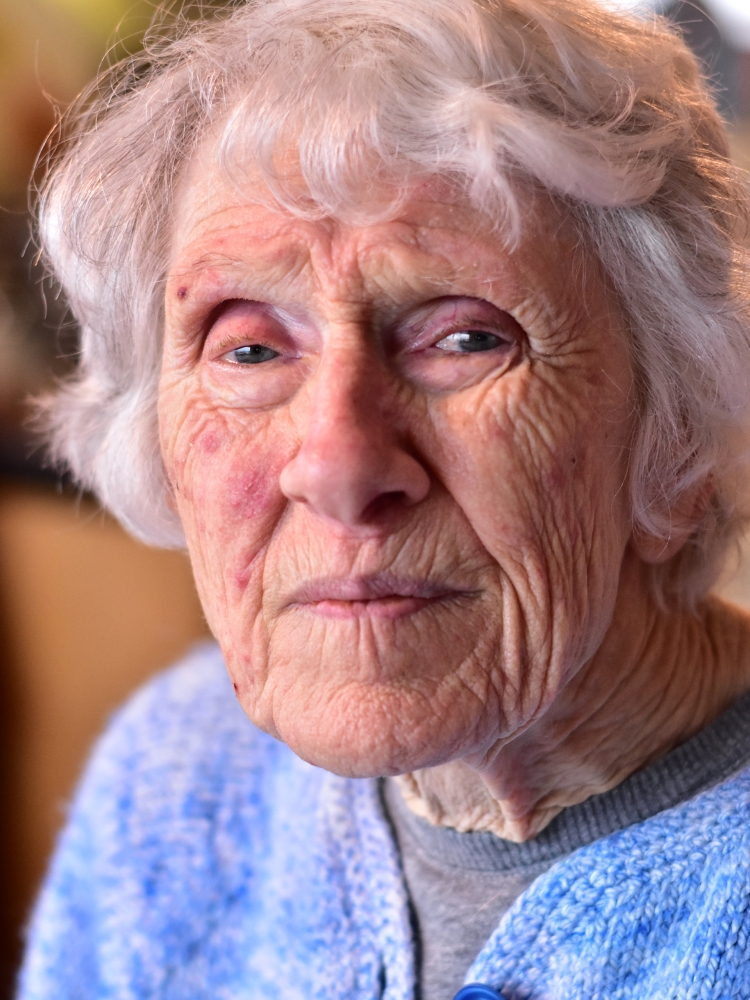
_________________
"Here's to the wonder" -- Alan Boyle
Nikkor/Nikon 20, 24, 28, 35, 50, 55, 85, 105, 135, 180, 200, 300, 10-20, 18-35, 18-55, 28-50, 28-70, 24-85, 35-200, 50-300, 75-150, 80-200, 70-210, 70-300, 200-500
Minolta Rokkor 24, 28, 35, 45, 50, 58, 100, 135, 50-135, 300
My most interesting images | Full photostream
|
|
| Back to top |
|
 |
justtorchit


Joined: 12 Oct 2009
Posts: 269
Location: St. Louis, MO
|
 Posted: Sat Jan 30, 2021 5:08 pm Post subject: Posted: Sat Jan 30, 2021 5:08 pm Post subject: |
 |
|
justtorchit wrote:
I read your post and found myself very curious about this theory. So I tested it. I ran my Nikon Z 6 vs. my Sony a6500 using two lenses: the Canon FD 35mm f/2.0 (concave) and my Nikkor 50mm f/1.4 Non-AI. Both are given production dates around 1973 or thereabouts.
TL;DR I'm not seeing it.
Nikon Z 6, Sony a6500, Canon FD 35mm f/2.0 (concave), Nikon Nikkor 50mm f/1.4 Non-AI

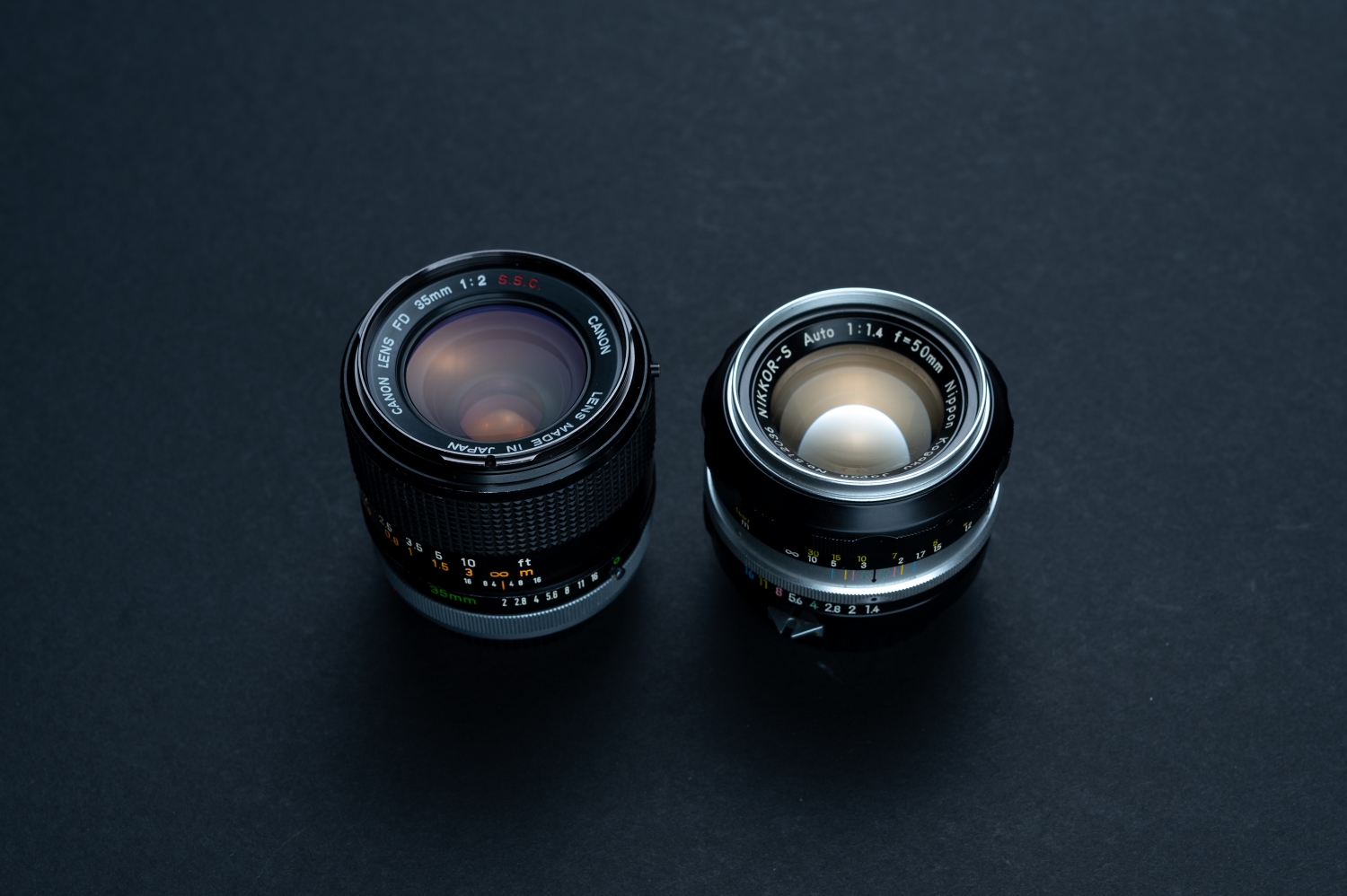
It's also dreary and rainy out today so I posted up at the back window, pulled out the tripod and began my test. I selected the same, though somewhat arbitrary color balance for both camera, manual settings (ISO 400), and same shutter speeds for each capture of the same aperture mark. For the FD 35mm I made captures at f/2.0, f/2.8, and f/4.0. For the Nikkor 50mm I made captures at f/1.4, f/2.0, and f/2.8.
I'm not sure if this is the best way to do this, but rather than trying to res-down these results, I placed the full files in a dropbox. All RAW files are here for viewing: https://www.dropbox.com/sh/41ywardnvwrwbc8/AABB-ss9xI37UItkANswKWoxa?dl=0
Similarly the compositions are both rather boring. The first composition is focused at the fence in the backyard. The second is focused on the nearest branches of the Christmas tree lying on our back patio (because we missed Christmas Tree pickup and I have lazily been clipping it and using it for kindling for the firepit).
Summarily, I am not seeing the issue you are talking about. The results look far more like one would expect, that is, that the more central cropped image on the APS-C sensor contains more resolution but in no way enhances the aberrations, at least certainly not to the detriment that you have shared. I must conclude the issue you're referring to is specific to the model of camera or chosen vintage lenses you are using. As others have posted above, maybe the sensor stack in the specific models you own is significantly affecting the aberrations but this does not appear to be the case universally. Perhaps others viewing these files may view them in a different light?
_________________
David
www.davidkovaluk.com - personal website
www.instagram.com/davidkovaluk
http://makingnottaking.blogspot.com/ - photoblog |
|
| Back to top |
|
 |
KEO


Joined: 27 Sep 2018
Posts: 775
Location: USA
|
 Posted: Sat Jan 30, 2021 6:59 pm Post subject: Posted: Sat Jan 30, 2021 6:59 pm Post subject: |
 |
|
KEO wrote:
| cbass wrote: |
| I haven't had old film lenses perform this poorly on my APS-C Fuji. |
+1
I've used hundreds of old lenses on my X-T2 and I've never had any problems with IQ unless it was the lens...or more likely user error.  |
|
| Back to top |
|
 |
blotafton


Joined: 08 Aug 2013
Posts: 1636
Location: Sweden
|
 Posted: Sat Jan 30, 2021 7:13 pm Post subject: Posted: Sat Jan 30, 2021 7:13 pm Post subject: |
 |
|
blotafton wrote:
Maybe try again in better light. |
|
| Back to top |
|
 |
cbass

Joined: 27 Jul 2019
Posts: 450
|
 Posted: Mon Feb 01, 2021 2:56 am Post subject: Posted: Mon Feb 01, 2021 2:56 am Post subject: |
 |
|
cbass wrote:
If you like to use fast old film era lenses on digital camera's, then in my opinion using a APS-C sensor with a high quality speed booster like the metabones is preferred over full frame.
Most of the digital camera's have filter stacks that are thick enough to have a negative impact on fast film era lenses. Typically by f/2.8 even a thick filter stack isn't impacting the lens much anymore. However, fast lenses can be impacted pretty significantly.
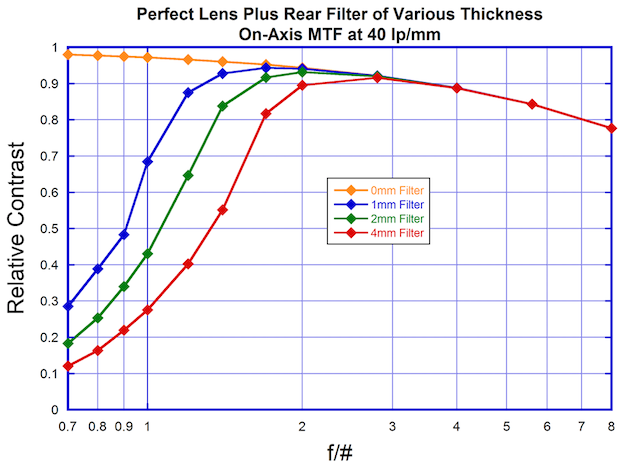
Source:
https://petapixel.com/2014/07/08/sensor-stack-thickness-part-iii-summary/
Here you can see MTF's can actually improve with a speed booster. It looks like when they design the speed booster they are taking into account the thickness of the filter stack.

Source and interesting read if you have the time:
https://wordpress.lensrentals.com/blog/2014/06/the-glass-in-the-path-sensor-stacks-and-adapted-lenses/
If you are just mounting the lens on a Full Frame thick sensor stack sensor using just a dumb adapter you are likely to get worse results than speed boosting the lens on APS-C.
Leica as usual is an exception. They have a very thin filter stack. Less than 1mm and their old film lenses still work well for the most part on their digital cameras. Leics engineer as usual though is above the rest.
Filter stacks will vary by camera manufacturer and camera model.
Sony mirrorless cameras unfortunately have much bigger issues than just a filter stack. They literally modified a APS-C size mount to put on their full frame camera's and that comes with it's own set of issues. |
|
| Back to top |
|
 |
stevemark

Joined: 29 Apr 2011
Posts: 4080
Location: Switzerland
|
 Posted: Tue Feb 02, 2021 1:41 am Post subject: Re: Vintage lenses: APS-C troublesome, FF not Posted: Tue Feb 02, 2021 1:41 am Post subject: Re: Vintage lenses: APS-C troublesome, FF not |
 |
|
stevemark wrote:
| Alex TG wrote: |
| stevemark wrote: |
Now the same lens at f4 (its sweet spot!) on 24 MP APS-C:
|
And why EXIFs show that all four pictures were shot with Sony A7II, may I ask?  |
I usually superimpose all test images of a test series in Photoshop, using layers. This allows me to click through the images, and to easily compare even slight differences (works much better for me than side-by-side comparisons). Then I crop the whole file (with all the images stacked), e. g. a center crop or a corner crop, and then I save/export the individual layers as JPGs, to publish them. Believe it or not - but Photoshop now assigns some EXIF-information from the base layer (e. g. camera used) to all other layers, regardless of how they were taken! I wasn't aware of that Photoshop flaw until you noticed the discrepancy, and frankly im quite stunned. But that's how it is.
To make it clear: My descriptions of all the images aboves is correct, however the EXIF information assigend by Photoshop is - depending on the image - in one case correct, and in the three other cases wrong.
| kymarto wrote: |
| I'm now using a 62mp FF camera,, which has about the same pixel density as a 24mp APSC camera and am not noticing any issues such as you describe. |
Sure? See image below ... 
| kymarto wrote: |
Here is a full image and a ~100% crop of an image shot in APSC mode (26mp) on my Sony A7R4. Lens is a Kodak Ektar 47mm f2 lens from an old folding Retina camera from the 1950s. Shot wide open at f2. Contrast is not terribly high, but the lens is sharp and shows no fringing
#2
 |
That's exactly the effect I was trying to describe !! Depending on the age of the lens (and therefore on the glass used) there's often less CA (but more other aberrations) with older and/or cheaper vintage glass. Very fast and extremely fast vintage lenses (f1.4 ... f1.2) from around 1970-1980 have more CAs than their slower and older counterparts. But anyway, we both have observed the same effect, but you don't care and I do 
| kymarto wrote: |
| Perhaps this has to do with the sensor on your APSC camera and not the pixel density. It's quite a stretch to blame the difference on pixel density testing only a single example of each type of sensor. |
I've been testing and using quite a few FF and APS-C sensors during the past 20 years - starting from the 2.7 MP of the Nikon D1, going to 6 MP, 12 MP, 16 MP, and 24 MP APS-C sensors as well as 8 MP APS-H, but also FF sensors with 12 MP, 24MP, 36MP 43 MP and 50 MP FF, and and 36 MP and 50 MP medium format sensors. These sensors were mounted in cameras from Canon, Fuji, Leica, Minolta, Nikon, and Pentax.
And yes, the effect is based on pixel density.
S
_________________
www.artaphot.ch |
|
| Back to top |
|
 |
kymarto


Joined: 30 Nov 2016
Posts: 409
Location: Portland, OR and Milan, Italy
|
 Posted: Tue Feb 02, 2021 2:40 am Post subject: Posted: Tue Feb 02, 2021 2:40 am Post subject: |
 |
|
kymarto wrote:
I'm pretty certain you are wrong. What would be the physical mechanism by which larger photosites would affect color fringing or highlight bloom? Your tests are absolutely anecdotal--no contols, just a bunch of tests of random sensors. To convince me you need to use similarly modern sensors that are roughly equivalent in design.
Unfortunately I do not have a recent lower resolution FF sensor to compare with the A7R4. What I can do is to post five 100% magnification crops using crop mode on the A7R4. These are the five vintage "normal" lenses I happen to have with me. What is readily apparent is: 1) there is no color fringing except shooting wide open with the Canon f0.95, so fringing is not introduced by the sensor. 2) While there is blooming on highlights with the Ektar, Leonon and Canon, there is not with the Canter or the Highkor.
I have heard no reports, nor can I find anything on the Internet, to indicate that a denser sensor causes degradation of the image with vintage lenses. I invite anyone with both crop and FF cameras, or better yet MFT and FF cameras of similar age and sensor design to give it a try and let us know if they are seeing what Stevemark is reporting.
#1
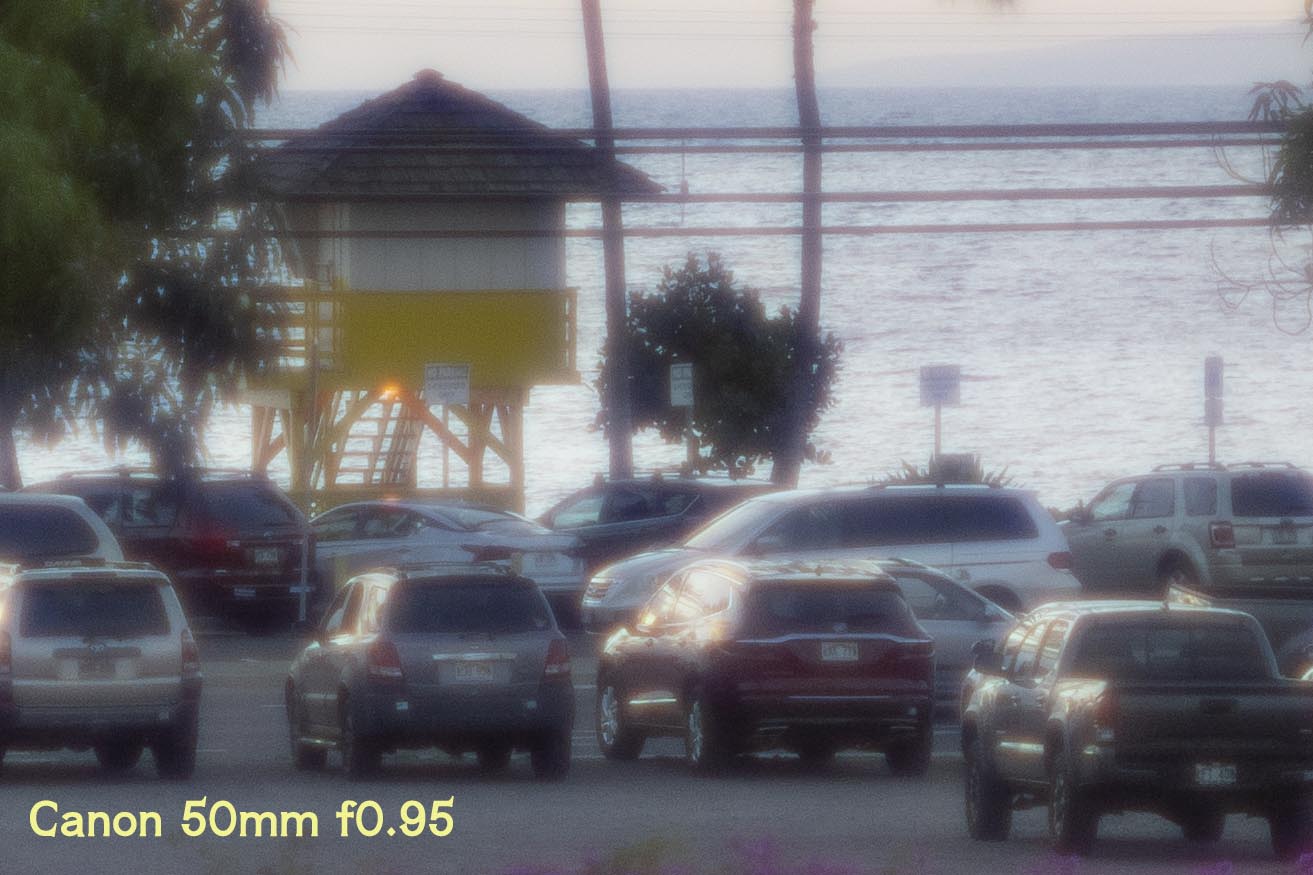
#2
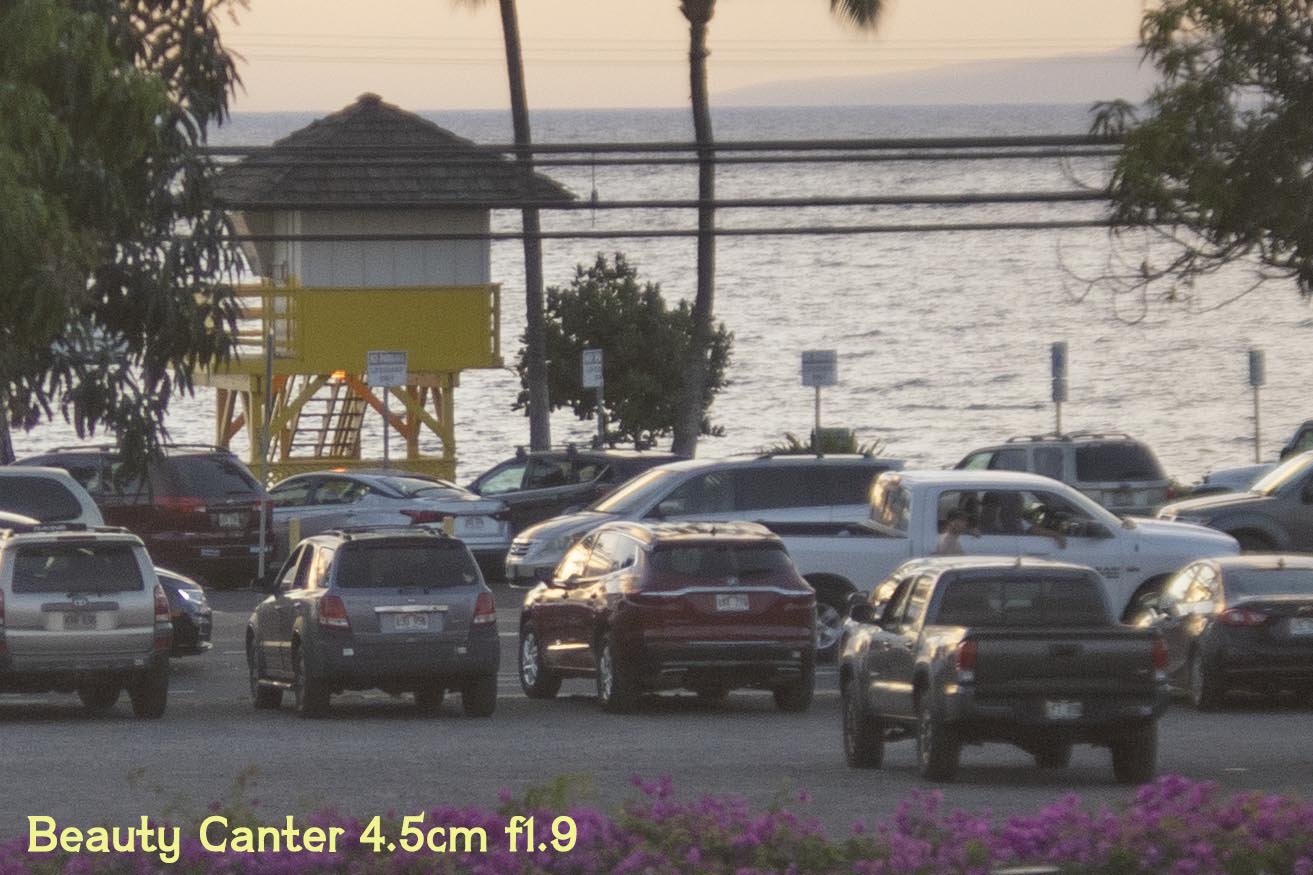
#3
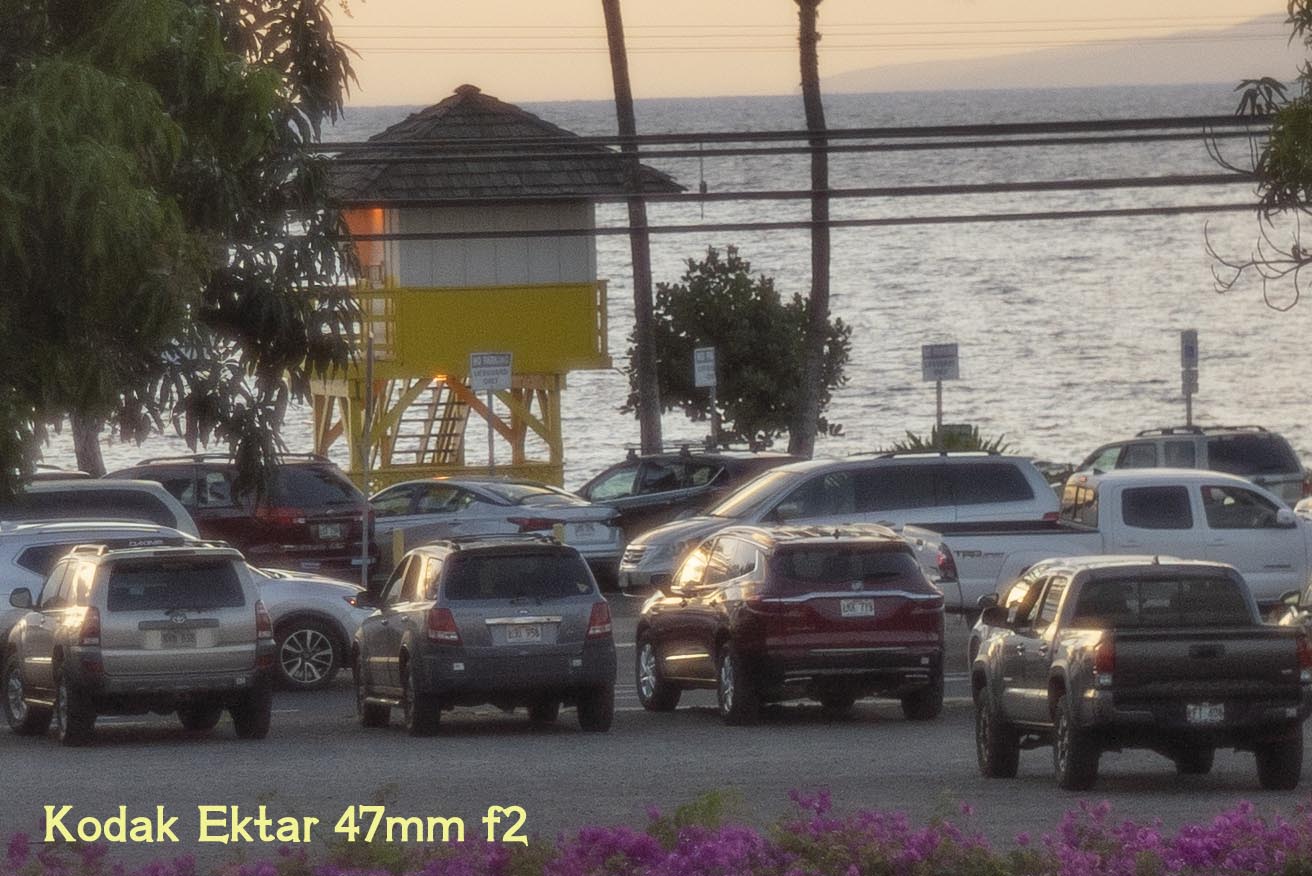
#4
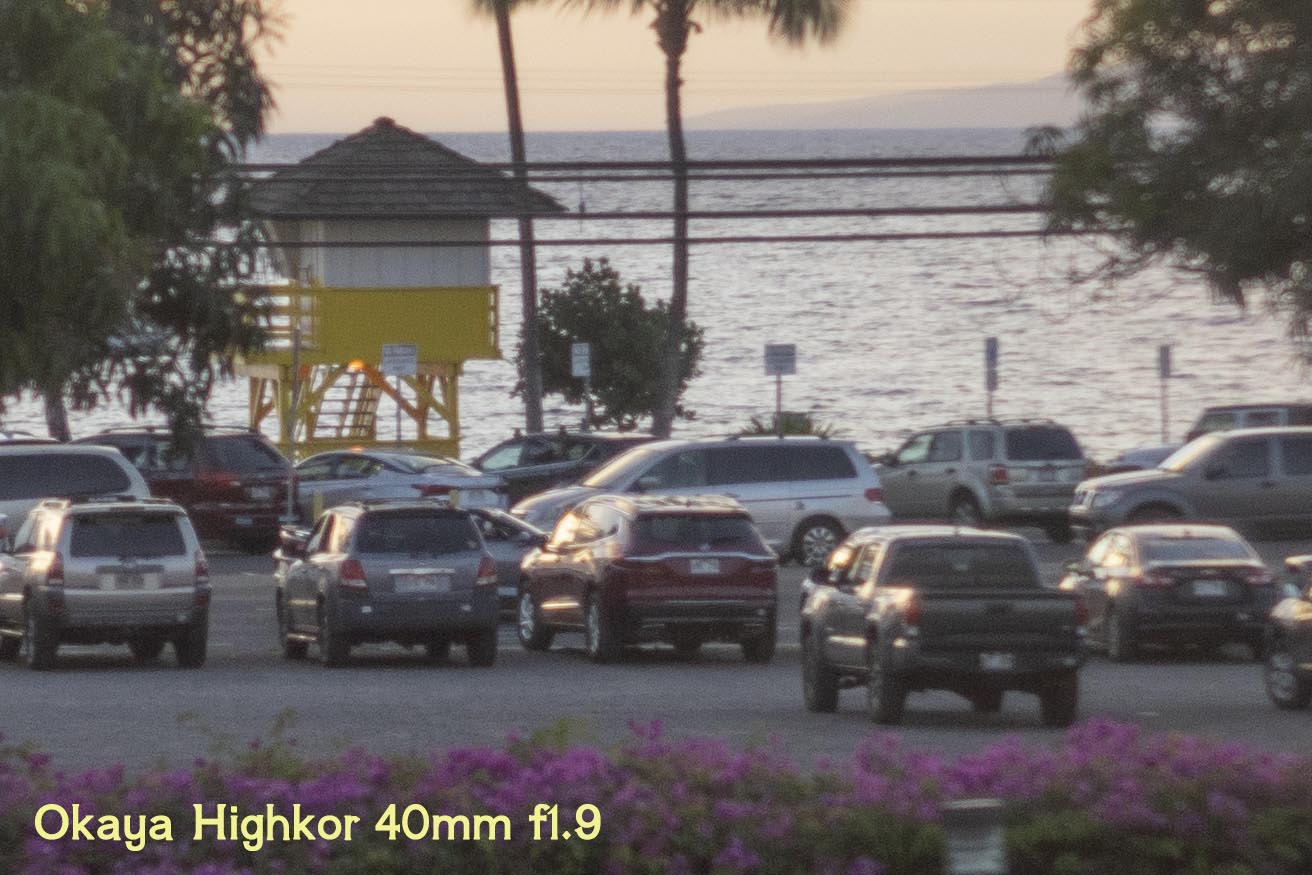
#5
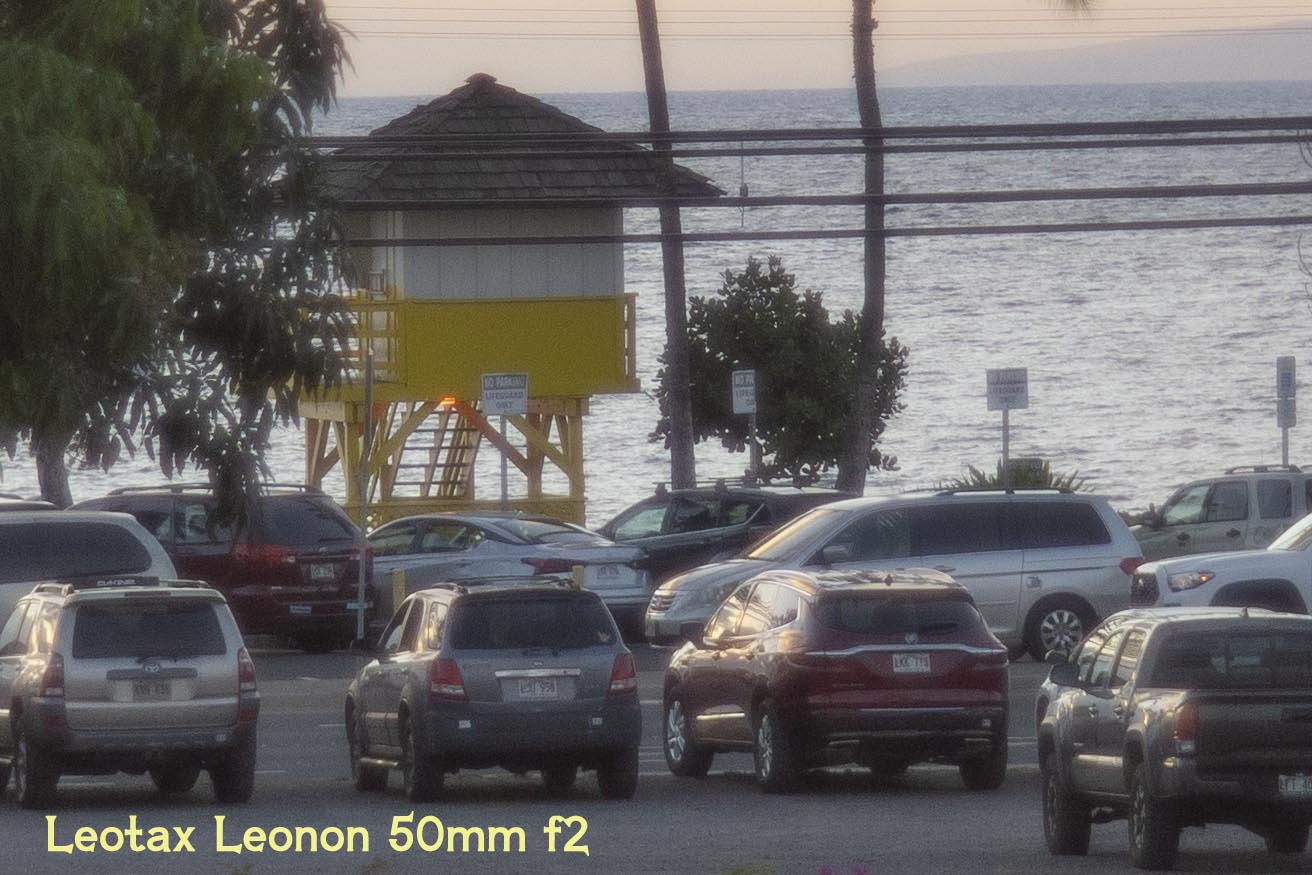
_________________
Vintage lens aficionado |
|
| Back to top |
|
 |
Alex TG

Joined: 13 Oct 2019
Posts: 221
Location: Ukraine
|
 Posted: Tue Feb 02, 2021 9:14 am Post subject: Re: Vintage lenses: APS-C troublesome, FF not Posted: Tue Feb 02, 2021 9:14 am Post subject: Re: Vintage lenses: APS-C troublesome, FF not |
 |
|
Alex TG wrote:
| stevemark wrote: |
I usually superimpose all test images of a test series in Photoshop, using layers. This allows me to click through the images, and to easily compare even slight differences (works much better for me than side-by-side comparisons). Then I crop the whole file (with all the images stacked), e. g. a center crop or a corner crop, and then I save/export the individual layers as JPGs, to publish them. Believe it or not - but Photoshop now assigns some EXIF-information from the base layer (e. g. camera used) to all other layers, regardless of how they were taken! I wasn't aware of that Photoshop flaw until you noticed the discrepancy, and frankly im quite stunned. But that's how it is.
|
Yep, makes sense. Photoshop does exactly that.
Thank you for clarifying! |
|
| Back to top |
|
 |
Ultrapix

Joined: 06 Jan 2012
Posts: 575
Location: Italy
|
 Posted: Tue Feb 02, 2021 3:56 pm Post subject: Posted: Tue Feb 02, 2021 3:56 pm Post subject: |
 |
|
Ultrapix wrote:
I have used almost all sensor formats, from 1 inch upwards, and have always experimented with old and modern optics on all of them. My experience is that every lens-sensor combination is an individual story. From the most intolerant ones like the FF of the Kodak 14 dsc, up to the most lenient ones (the Leica DMR for example had many problems but gave the best sharpness with every lens), I have always found some combination that rendered better or worse than the single elements suggested. I didn't make scientific comparisons, but I can say that in a quite long period in which I used in parallel the Canon 5DIII (21 mp on FF) and the EOS M 5 (24 mp on APS-C), in almost all cases the smaller sensor gave me sharper and brighter images, I think for a less aggressive antialiasing filter. |
|
| Back to top |
|
 |
stevemark

Joined: 29 Apr 2011
Posts: 4080
Location: Switzerland
|
 Posted: Tue Feb 02, 2021 7:12 pm Post subject: Posted: Tue Feb 02, 2021 7:12 pm Post subject: |
 |
|
stevemark wrote:
| kymarto wrote: |
| I'm pretty certain you are wrong. What would be the physical mechanism by which larger photosites would affect color fringing or highlight bloom? |
You may - or may not - know that, by formation, I'm a scientist.
I have been working in a field between chemistry and physics for years before changing to other fields like traditional medicine and photography. There's a solid scientific background here.
Later on, I may explain you in detail what's going on, because I would have to create some diagrams and images first. For the time being here a few hints:
You certainly are familiar with the effects of diffraction: When reducing the pixel size by 1.4x (e. g. from 12 MP to 24 MP), you have to open the aperture of an ideal (=aberration-free) lens by a factor of 1.4x (= one aperture stop, e. g. from f11 to f8 ) to get the same "per-pixel-sharpness".
Thus, diffraction is influencing the image quality "APS-C vs FF" in the upper aperture range. On 24 MP FF you can easily us the apertures up to f11; on 24 MP APS-C only to f8.
But now let's focus on the lower range of the apertures. Basically the degradation of "per-pixel-shearpness" when reducing pixel pitch is an easily understandable phenomenon; the main factors influencing it are ...
* Amount of LoCAs for a given lens (usually in the range of 0.1mm = 100 um for a 1970s fast normal lens)
* Amount of monochomatic aberrations for a given lens
* Sensor pixel size (roughly in the range of 3 to 9 um)
* Aperture diameter, and distance of the exit pupil to the sensor
Let's focus now on the LoCA problems and the related magenta color cast.
Similarly to the effects of diffraction explained above, when moving from 24 MP FF to 24 MP APS-C, you have to close the aperture by one step to reduce the diameter of the magenta "circle of confusion" by 1.4x (https://en.wikipedia.org/wiki/Circle_of_confusion), assuming that the lens is perfectly focused one the green (or blue) wavelength. This has nothing to do with diffraction, it's simple geometrical optics (https://en.wikipedia.org/wiki/Geometrical_optics), so it's much easier to understand than diffraction which is described in wave optics (https://en.wikipedia.org/wiki/Physical_optics).
| kymarto wrote: |
Your tests are absolutely anecdotal--no contols, just a bunch of tests of random sensors. |
Be sure to check first what I've done, before making ill-founded claims  . .
You did claim recently that my experience with sensors is limited to jus one APS-C and one FF sensor (which obviously is not true).
Now you again (wrongly) are claiming certain things before checking the facts.
You simply are not aware of what I've done in the past ...
| kymarto wrote: |
| To convince me you need to use similarly modern sensors that are roughly equivalent in design. |
I can offer 6 MP / 12 MP / 24 MP APS-C. Obvioulsy there are no "modern" 6 MP APS-C sensors, but according to you the much more modern 24MP sensor should give better "per pixel" results.
| kymarto wrote: |
| Unfortunately I do not have a recent lower resolution FF sensor to compare with the A7R4. |
You may compare it to older designs as well, such as the classical 12 MP Nikon FF sensor of the D3 / D700. You'll be surprised how "clean" the images will look using you vintage glass.
| kymarto wrote: |
| What I can do is to post five 100% magnification crops using crop mode on the A7R4. These are the five vintage "normal" lenses I happen to have with me. What is readily apparent is: 1) there is no color fringing except shooting wide open with the Canon f0.95, so fringing is not introduced by the sensor. 2) While there is blooming on highlights with the Ektar, Leonon and Canon, there is not with the Canter or the Highkor. |
I've never claimed that the sensor is creating these problems!
You may have misunderstood, or - more probably - my English is too poor to clearly express what I know.
So I'll try again ...! Basically ...
1) the aberrations of a given lens have certain absolute value (e. g. "the circle of confusion has 15 um in diameter")
2) the relative size of these aberrations ("how many percents of the image are affected") varies with sensor size if the number of pixels remains constant.
Example:
A given lens (always the same lens!!) is perfectly focused on green light, but magenta light has a 15 um circle of confusion ("unsharpness"), as a result of its LoCAs. Now let's see how this will affect the different sensors.
1) on 12 MP FF (Nikon D3) the pixel pitch is 8.4 um => an area of roughly 3.2 pixels is affected with magenta light
2) on 24 MP FF (Sony A900) the pixel pitch is 5.9 um => an area of roughly 6.4 pixels is affected with magenta light
3) on 64 MP FF (Sony A7RIV) the pixel pitch is 3.73 um => an area of roughly 16.2 pixels is affected with magenta light
4) on 26 MP APS-C Fuji X-T3 the pixel pitch is 3.77 um => an area of roughly 15.8 pixels is affected with magenta light
You can easily understand now how the very same lens will cause much more "magenta color cast" on a 26 MP APS-C sensor, compared to a 24 MP FF sensor.
Now let's compare two different lenses on different sensors (a sligtly more complicated problem ...) -
A) a modern lens with 10 um circle of confusion at the wavelengths of magenta light, mounted on the 26 MP APS-C Fuji X-T3
B) a vintage lens with 15 um circle of confusion at the wavelengths of magenta light, mounted on the 24 MP FF Sony A7II
For lens A the magenta circle of confusion has 10 um in diameter, and it covers roughly 7.0 pixels on the 26 MP APS-C Fuji X-T3
For lens B the magenta circle of confusion has 15 um in diameter, and it covers roughly 6.5 pixels on the 24 MP FF Sony A7II
Both lens/camera combinations will have the same amount of "magenta color cast"!
These are just a few examples. Here are some more factors influencing the magenta color cast:
* Aperture used: Stopping down a lens often reduces the magenta circle of confusion, but not always. So you may get unexpected results here, depending on the actual lens used.
* Glass used for the lens construction: Lens X (1.5/5cm) with low refraction index glass (which also means low Abbé number and thus often lower CAs) will have less magenta color cast but more "glow" (more monochromatic aberrations) than a lens Y (1.2/50mm) with high refractive glass (which also means high Abbé number and thus usually higher CAs).
* The texture of the subject: Finely textured reddish areas (e. g. tiles on a roof at distance) are very prone to magenta color cast, as you can see from the discussion above. A subject with the same color, but no structures reacts much more begnin, of course. Finely textured green structures usually are no problem at all - there's nearly no red light in them.
* Glass used for the lens construction: Lens X (1.5/5cm) with low refraction index glass (which also means low Abbé number and thus often lower CAs) will have less magenta color cast but more "glow" (more monochromatic aberrations) than a lens Y (1.2/50mm) with high refractive glass (which also means high Abbé number and thus usually higher CAs).
To sum it up - once you have understood the basic physics, you can easily understand why certain combinations of lens, sensor, aperture, glass used, etc. will give certain results.
| kymarto wrote: |
| I have heard no reports, nor can I find anything on the Internet, to indicate that a denser sensor causes degradation of the image with vintage lenses. |
I've been reporting those facts already back in 2011 to a bunch of Sony engineers when we were discussing the A77. I don't care too much about what is (not) reported in the internet. Large parts of the internet are dominated by beliefs (and those vigorously defending their beliefs!) - and not by those carefully analyzing reality. [/i]
I'm very well aware that my theoretical examples given above are [i]oversimplified. Yet the give a pretty accurate impression of what I've experienced in 10 years of testing / comparing nearly 1000 lenses on many different sensors.
During the next few days I've not much time to conduct further tests, but if you want me to show / explain you something, you may specifically ask me. We'll find a solution.
S
_________________
www.artaphot.ch |
|
| Back to top |
|
 |
D1N0


Joined: 07 Aug 2012
Posts: 2536
|
 Posted: Tue Feb 02, 2021 7:45 pm Post subject: Posted: Tue Feb 02, 2021 7:45 pm Post subject: |
 |
|
D1N0 wrote:
It doesn't really matter what the pixel size is. The sensor size matters more. Simply because the size of the aberrations is a given no matter how many pixels you use (not taking the use of speed boosters into account and unless you insist on viewing everything 1:1 sensor/screen pixels) on the final output image the aberrations will be less enlarged when they come from a larger sensor at the same viewing size of the image. You cannot expect to get the same resolution out of a smaller sensor than what you get with a larger sensor that has the same amount of pixels. Just because you do not get much improvement from an increased amount of pixels on smaller sensors, does not mean it renders them useless for vintage glass. You will get nearly the same image on aps-c whether you have 16 or 24mp.
_________________
pentaxian |
|
| Back to top |
|
 |
kymarto


Joined: 30 Nov 2016
Posts: 409
Location: Portland, OR and Milan, Italy
|
 Posted: Tue Feb 02, 2021 8:56 pm Post subject: Posted: Tue Feb 02, 2021 8:56 pm Post subject: |
 |
|
kymarto wrote:
Hi stevemark
Thanks for your explanation. I also have a science background and so this makes sense and the physics are obvious. That being said, I have to say that I have rarely noticed a major problem with loCAs among my 100+ vintage lenses that are not super speed lenses, certainly not like the Nikkor 85mm from which you posted your examples. I don't think there is any question that a 24mp FF solution will give better results than 24mm APSC, but are you overstating the problem by showing the most egregious example?
_________________
Vintage lens aficionado |
|
| Back to top |
|
 |
cbass

Joined: 27 Jul 2019
Posts: 450
|
 Posted: Tue Feb 02, 2021 10:05 pm Post subject: Posted: Tue Feb 02, 2021 10:05 pm Post subject: |
 |
|
cbass wrote:
If you have a full frame lens with bad chromatic aberrations, then it only gets worse when you mount it to APS-C. Of all the film and manual lenses I have there is only one or two that has terrible chromatic aberrations. The other 20+ lenses have no issues. This test in my opinion doesn't reflect the typical experience using FF lenses on APS-C. |
|
| Back to top |
|
 |
Blazer0ne

Joined: 12 Sep 2018
Posts: 836
Expire: 2024-12-07
|
 Posted: Tue Feb 02, 2021 10:41 pm Post subject: Posted: Tue Feb 02, 2021 10:41 pm Post subject: |
 |
|
Blazer0ne wrote:
...
Last edited by Blazer0ne on Tue Feb 22, 2022 7:05 pm; edited 1 time in total |
|
| Back to top |
|
 |
alex ph

Joined: 16 Mar 2013
Posts: 1674
|
 Posted: Tue Feb 02, 2021 11:18 pm Post subject: Posted: Tue Feb 02, 2021 11:18 pm Post subject: |
 |
|
alex ph wrote:
Blazer0ne wrote:
| Quote: |
| Wipe your tears off the sensor and move on... |

Stevemark, Kymarto, thank you for your contributions. It's passionately interesting to follow your competitive exchange which makes clearer some techie dimensions of the use of manual optics.
Meanwhile it's striking to observe that you consider only the material base of digital image, taking sensors for its only source. Sensors evolve, including their pixel density, that's the fact. But camera processors evolve too. While the image is produced in sensor-processor workflow, you have plenty reasons to question the way how newer processors operate the growing pixel density and manage CAs, including RAW files.
Here is an example of a good sci-pop article aiming precisely this topic, which starts from the same basic problem of pixel-denser sensors pointed out by Stevemark.
Would you comment on that? |
|
| Back to top |
|
 |
|
|
